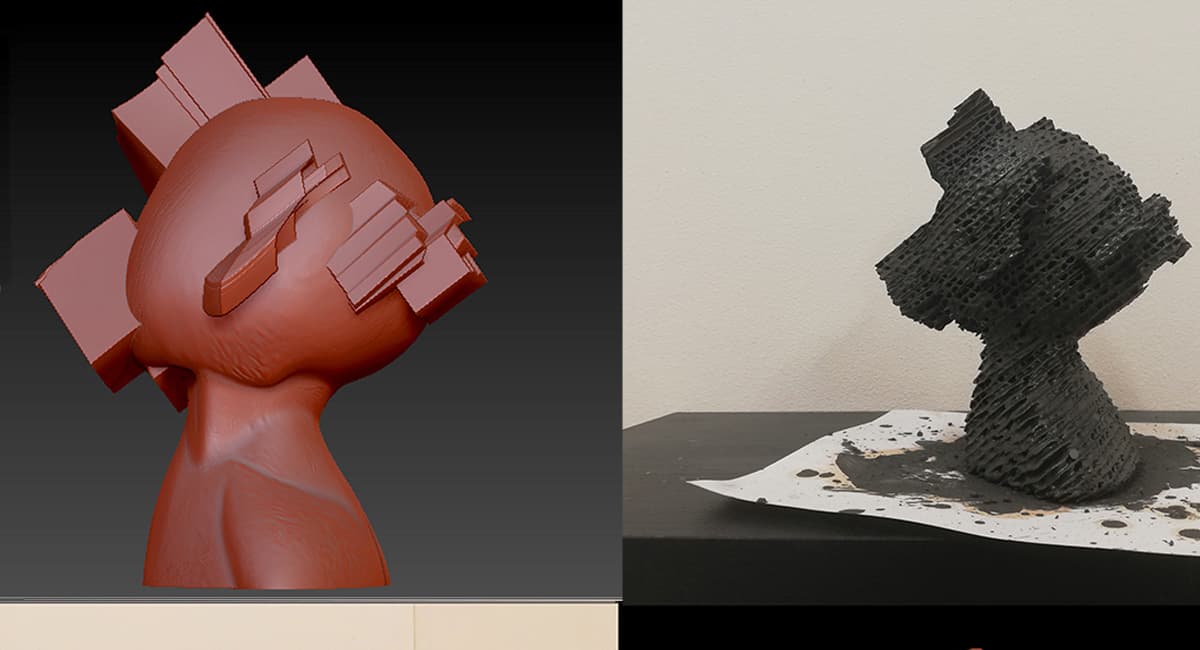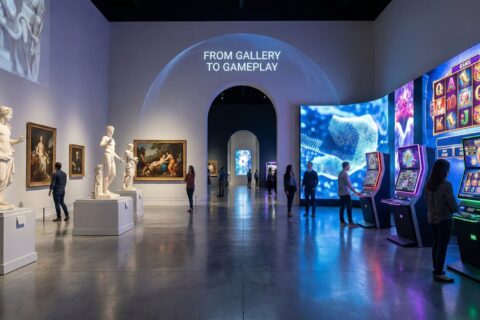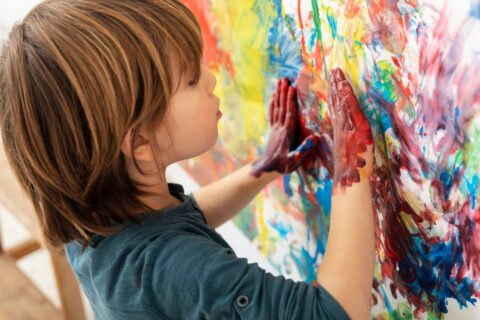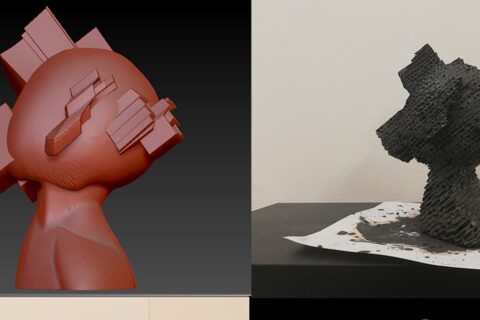
The Evolution of Digital Sculpture: Bridging Traditional Techniques with Modern Technology
- Leake Camille
- July 29, 2024
- Genres of sculpture
- No Comments
The world of sculpture, traditionally rooted in hands-on craftsmanship, has witnessed a significant transformation with the advent of digital technology. This evolution is not just a shift in tools but represents a profound change in artistic expression and process. The integration of digital techniques with traditional methods has opened new avenues for creativity, precision, and accessibility in sculpture.
The Confluence of Tradition and Innovation
Digital sculpture merges the time-honored practices of molding, carving, and modeling with advanced technological tools such as 3D modeling software, 3D printing, and laser cutting. This hybrid approach allows artists to explore new forms and textures that were previously unimaginable. As noted by digital sculptor Michael Hansmeyer, “The use of algorithms and computer-generated models enables the creation of complex structures that are impossible to achieve by hand.”
The fusion of these techniques provides artists with unparalleled flexibility. Traditional sculptors who transition to digital methods often find that their skills are not replaced but rather enhanced. Digital tools serve as extensions of the traditional techniques, offering new possibilities for experimentation and refinement. Sculptor Marguerite Humeau explains, “Digital technology allows me to explore forms in a virtual space, manipulating them in ways that would be too time-consuming or physically challenging to achieve manually.”
Enhancing Precision and Efficiency
One of the most significant advantages of digital sculpture is its precision. Advanced software enables artists to design with exact measurements and proportions, ensuring a high degree of accuracy. This precision is particularly beneficial in large-scale public art installations where structural integrity and safety are paramount. “3D modeling software provides a level of detail and control that enhances both the aesthetic quality and the structural soundness of sculptures,” says structural engineer Alex Johnson.
Moreover, the efficiency of digital tools accelerates the creative process. Artists can rapidly prototype their ideas, making adjustments in real-time without the need for costly and time-consuming physical alterations. This aspect of digital sculpture is highlighted by artist Joshua Harker, who states, “The ability to iterate quickly on a digital model means I can explore more creative options and refine my work to a higher standard before committing to the final material.”
Expanding Accessibility and Collaboration
Digital sculpture also democratizes the art form, making it more accessible to a broader audience. With 3D printing technology, artists can reproduce their works in multiple sizes and materials, allowing for wider distribution and more diverse applications. “3D printing has revolutionized sculpture, enabling artists to share their work more easily and reach audiences that were previously inaccessible,” notes art curator Emily Fisher from 20 dollar deposit casino.
Furthermore, digital platforms facilitate collaboration among artists, engineers, and technologists. This interdisciplinary approach enriches the creative process, bringing together different perspectives and skills. As artist and technologist Anouk Wipprecht observes, “The intersection of art and technology opens up new dialogues and possibilities, pushing the boundaries of what sculpture can be.”
Challenges and Considerations
Despite its many benefits, the integration of digital technology in sculpture is not without challenges. The cost of high-quality digital tools and equipment can be prohibitive, particularly for emerging artists. Additionally, the steep learning curve associated with mastering these technologies can be a barrier to entry. “While digital tools offer incredible potential, they require significant investment in time and resources to learn and utilize effectively,” cautions art educator Robert Clarke.
Another consideration is the preservation of digital works. Unlike traditional sculptures, which can be physically restored, digital files are susceptible to data corruption and obsolescence of software and hardware. “The longevity of digital art is a concern, as it relies on constantly evolving technology,” says archivist Linda Rodriguez. This issue highlights the need for robust digital archiving practices and the development of standards for preserving digital art.
The Future of Digital Sculpture
Looking ahead, the future of digital sculpture is bright, with ongoing advancements in technology promising even greater possibilities. Innovations in virtual reality (VR) and augmented reality (AR) are poised to further transform the field, offering immersive experiences that blur the lines between the physical and digital realms. “VR and AR technologies will enable sculptors to create interactive installations that engage audiences in entirely new ways,” predicts futurist David Chan.
In conclusion, the evolution of digital sculpture represents a harmonious blend of traditional craftsmanship and modern technology. By embracing both old and new methods, artists are not only preserving the rich heritage of sculpture but also pushing the boundaries of creativity. As digital tools become more sophisticated and accessible, they will continue to shape the future of sculpture, offering endless opportunities for innovation and expression
Il futuro dell’apprendimento gamificato
Il futuro dell’apprendimento gamificato appare promettente, con i progressi della tecnologia come la realtà virtuale (VR) e la realtà aumentata (AR) che aprono nuove possibilità. Queste tecnologie possono creare ambienti di apprendimento ancora più immersivi e interattivi. “La VR e l’AR possono trasportare gli studenti in luoghi e tempi diversi, offrendo opportunità di apprendimento esperienziale che sono sia coinvolgenti che educative,” afferma l’innovatrice tecnologica Lisa Wong.
Man mano che la ricerca continua a esplorare gli impatti della gamificazione sui risultati di apprendimento, è probabile che un numero crescente di istituzioni educative adotti strategie basate sui giochi. Questa tendenza rappresenta una svolta verso un approccio più centrato sullo studente, in cui il coinvolgimento e la motivazione sono fondamentali per promuovere l’apprendimento permanente.
Apprendimento personalizzato e gamificazione adattiva
Man mano che la gamificazione nell’istruzione continua a evolversi, l’apprendimento personalizzato diventa un focus chiave. La gamificazione adattiva, in cui gli elementi di gioco si adattano agli stili di apprendimento e ai ritmi individuali, sta attirando sempre più attenzione. “La gamificazione personalizzata garantisce che ogni studente sia sfidato in modo appropriato, prevenendo la noia o la frustrazione,” afferma il Dr. Alex Brown, esperto in tecnologie di apprendimento adattivo. Questo approccio sfrutta l’analisi dei dati per personalizzare l’esperienza di apprendimento, rendendola più efficace e coinvolgente per gli studenti diversi. Con l’avanzare della tecnologia, il potenziale per esperienze educative altamente personalizzate cresce, migliorando ulteriormente l’efficacia dell’apprendimento gamificato.
Gamificare l’istruzione è un modo potente per migliorare il coinvolgimento degli studenti, la motivazione e i risultati dell’apprendimento. Integrando elementi di gioco nei contesti educativi, gli educatori possono creare esperienze dinamiche e interattive che risuonano con gli studenti. Sebbene esistano sfide, un’implementazione ponderata e un focus sull’inclusività possono aiutare a massimizzare i benefici dell’apprendimento gamificato. Con il continuo evolversi della tecnologia, il potenziale della gamificazione nell’istruzione crescerà ulteriormente, offrendo possibilità entusiasmanti per il futuro dell’apprendimento.









